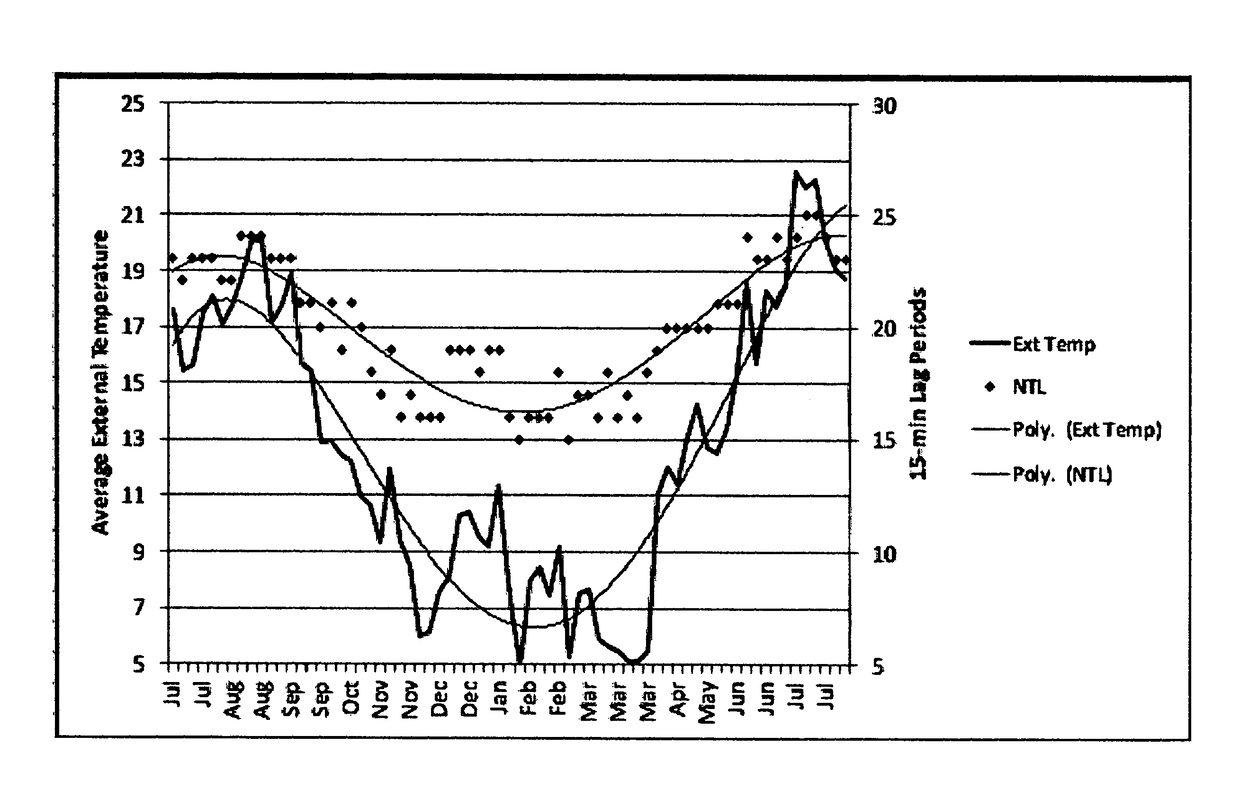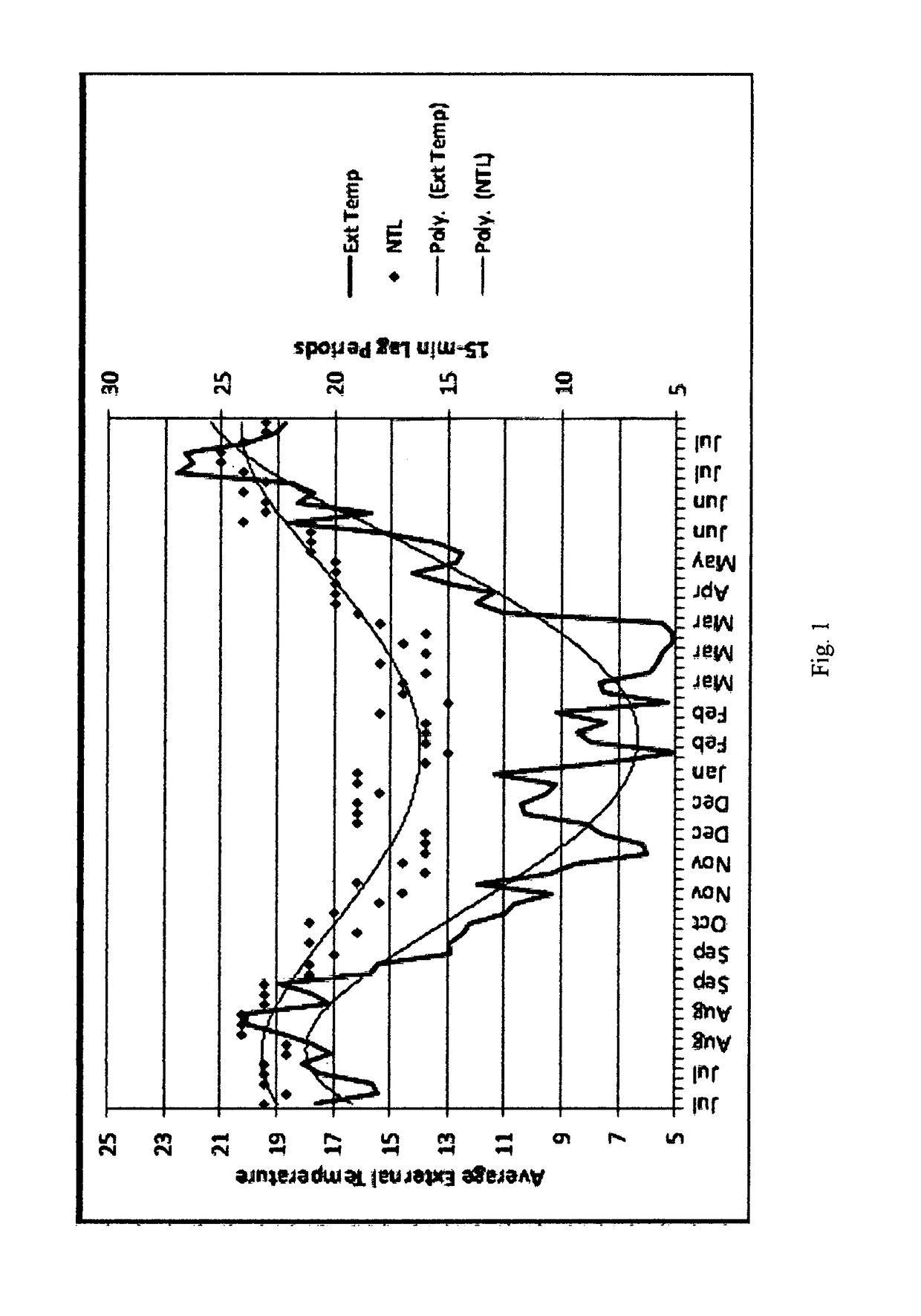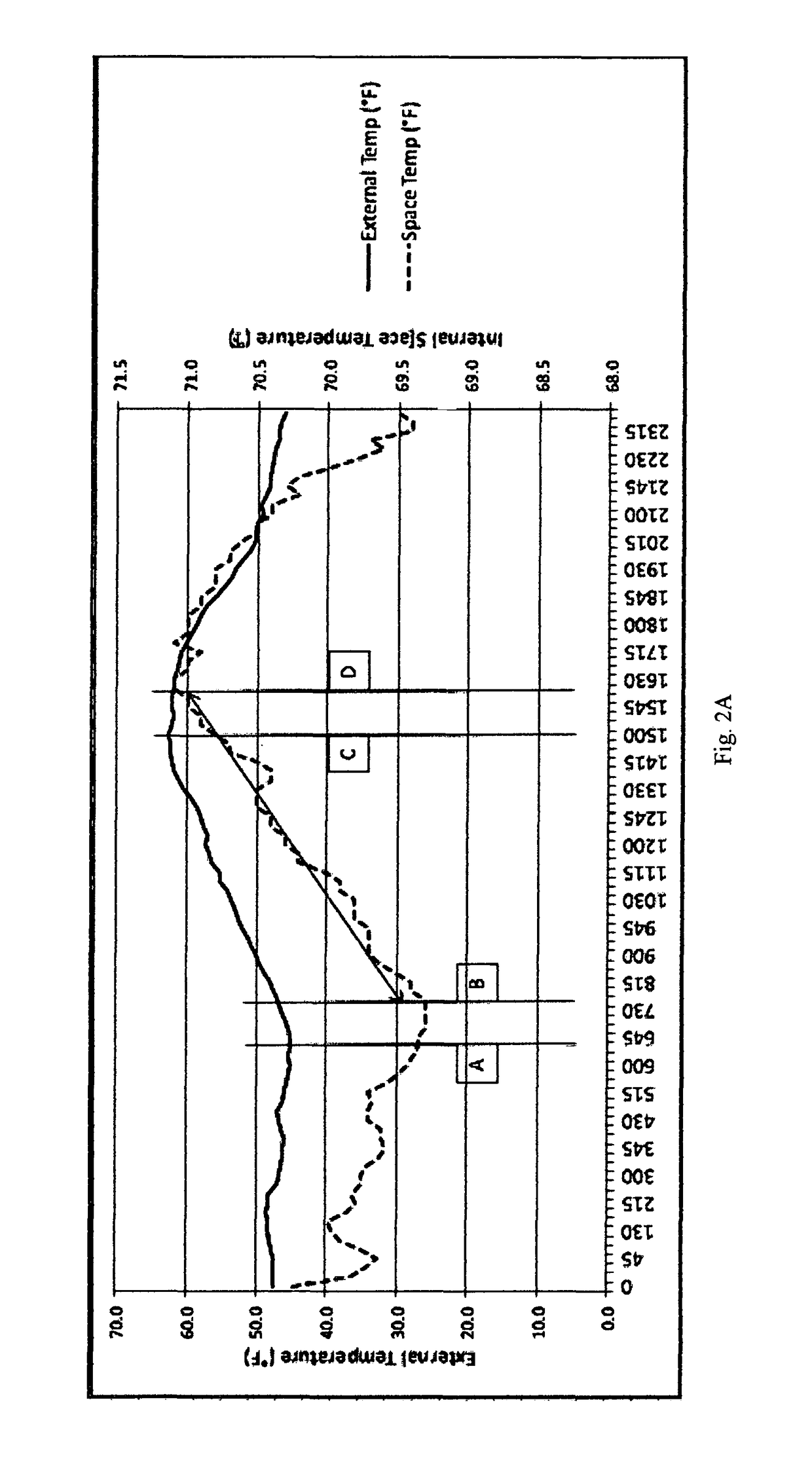Method of reducing heating energy consumption in commercial buildings
a technology for commercial buildings and energy consumption, applied in the field of energy management, can solve the problems of high cost, high detail required to accurately simulate commercial buildings, and large plant sizes, and achieve the effect of reducing the thermal energy consumed
- Summary
- Abstract
- Description
- Claims
- Application Information
AI Technical Summary
Benefits of technology
Problems solved by technology
Method used
Image
Examples
Embodiment Construction
Introduction
[0042]The invention is a method which can be implemented on a computing device capable of connecting directly to a commercial building management system. The inventive method provides improved control of plant operations to enable significant energy savings in commercial buildings while providing desirable occupant comfort levels.
[0043]This section describes the introduction of two new thermal profiles, the manner in which these profiles along with the natural thermal lag described in publication number 2013-0304269 A1 and publication number 2015-0198961 A1 can be applied to the control of plant in a particular building, and finally, the application of these concepts to an actual building and the energy reduction results. The two new building specific thermal profiles are referred to as the Solar Gain Rate (SGR) and the Day-time Natural Cool-down Rate (DNCR).
[0044]Following publication number 2013-0304269 A1, where the derivation of a building's natural thermal lag was p...
PUM
 Login to View More
Login to View More Abstract
Description
Claims
Application Information
 Login to View More
Login to View More - R&D Engineer
- R&D Manager
- IP Professional
- Industry Leading Data Capabilities
- Powerful AI technology
- Patent DNA Extraction
Browse by: Latest US Patents, China's latest patents, Technical Efficacy Thesaurus, Application Domain, Technology Topic, Popular Technical Reports.
© 2024 PatSnap. All rights reserved.Legal|Privacy policy|Modern Slavery Act Transparency Statement|Sitemap|About US| Contact US: help@patsnap.com










